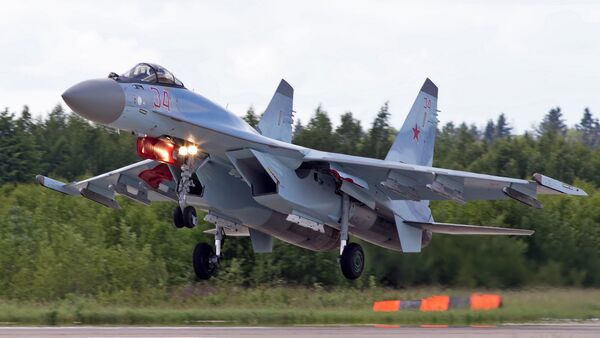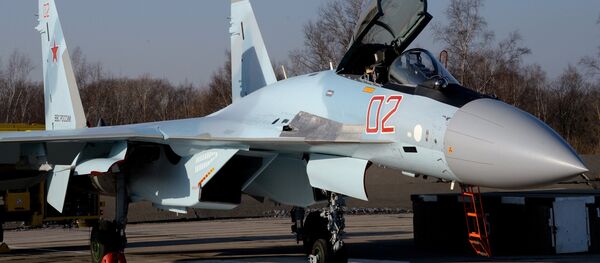He said that during the early stages of their use in Syria, the planes used to suck in small pebbles and small debris from the runway during takeoff, and also had problems with the searchlight and computer screens, all of which have since been addressed and rectified.
“Our pilots deployed in Syria say that this is one of the best jets in the world today in terms of flight and technical efficiency and also when it comes to the firing range of its onboard weapons,” Borisov stated.
The Su-35S is a modified version of the Su-35 fighter plane and is a 4++ generation combat aircraft.
In an interview with Sputnik, Viktor Pryadka, general director of the Aviation Technology Alliance (Avintel), pointed to the plane’s onboard weapons systems as the possible reason for the planned upgrade.
“Since the start of its mass-scale production, the Su-35S’ systems have been brought to near perfection. However, with the experience of its combat use [in Syria] in mind, I guess that they want to bring its onboard fire control, homing and target acquisition systems up to speed,” Pryadka said.
He added that the Su-35S is “perfect for export,” provided that maximum attention is paid to its production quality.
Viktor Pryadka noted that the plane’s other onboard weapons could need a certain degree of fine-tuning.
Maybe they have come up with some new ideas on how these weapons can be used. I believe that all these problems will eventually be solved,” Viktor Pryadka concluded.
Essentially an upgraded version of the Su-27 super-manoeuvrable fighter, the Su-35S multirole fighter vastly exceeds its predecessor’s capabilities, featuring an enhanced airframe, advanced control system, Irbis passive phased-array radar and AL-41F1S engine with a plasma ignition system and thrust-vectoring module.
The Su-35S has already made its debut during the Russian aerial campaign in Syria flying escort missions for Su-24 and Su-34 ground-attack planes.



